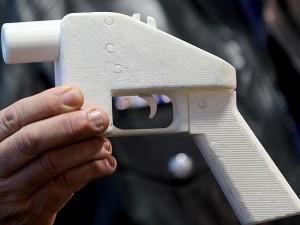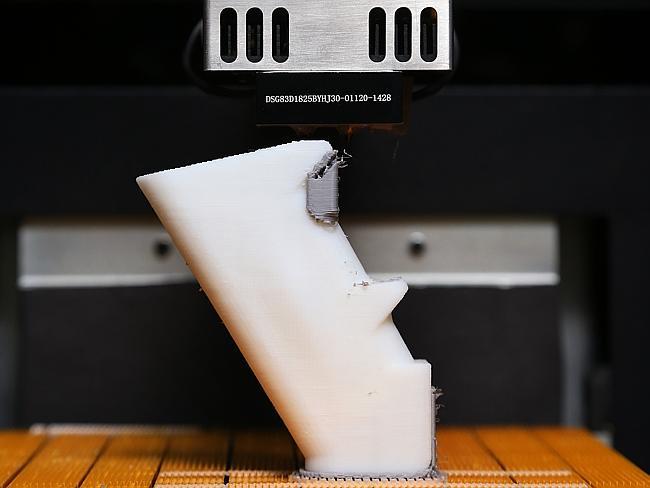When is a gun not a gun? When parts of it are 3D printed…or at least that’s what loopholes in legislation can effectively mean in terms of their abilities to regulate the production and sale of firearms.
The Australian National Firearms Agreement (NFA) was created following the shooting 1996 in Port Arthur, Australia that left 35 people dead. In combination with state laws, Australia has some of the most restrictive gun laws of any country in the world. Much of the legislation is aimed at classing the various weapons and determining who can have access to them. However, since the time of the creation of the NFA there have been changes in the ways in which guns can be produced that are causing renewed concern among Australian lawmakers.
As a result, two parties in Australia’s government, the Greens and the Labor, are undertaking a project to determine the best way to create legislation to deal with advances in gun technology. The dialog has come about as the possibilities for creating home made handguns increases. One of the technologies contributing to this rise in non-commercial weapons production is 3D printing.
In 2013, a radical Liberatarian group known as Defense Distributed released a video of their test fire of a gun that was fully printable. The weapon was created on a Stratasys 3D printer the group had bought used for $8,000. They then made the blueprint for the gun available freely online. They were required to remove the downloadable file, but not before it had been downloaded more than 100,000 times. In the months to come, as is to be expected, more variations of the 3D printed gun began to appear. An aficionado in Wisconsin produced a firearm capable of firing eight .38 bullets which had cost only the $1,725 he spent on the Lulbotz printer and $25 in plastic.
The concerns that Australian lawmakers are addressing in the presence of the realities presented by 3D printing are more complex than simply the legality of a particular process for making weapons. The very existence of these weapons requires reimagining traditional safety mechanisms such as registration or detection that are rendered effectively useless.
In fact, a more serious concern may be the creation of gun parts using 3D printing rather than the 3D printed versions themselves. The lower receiver of a gun is the part of the gun that is generally the subject of regulations, designed to control its sale and/or possession. However, if the lower receiver can be 3D printed, and FOSSCAD (Free Open Source Software & Computer Aided Design) contains clear evidence that it can, then anyone can build the rest of the gun on their own. The AR-15 for example, a semi-automatic rifle that can carry the same ammunition as an AK-47, would be accessible to those who could print the lower receiver, as the rest of the parts needed for its construction are unregulated and widely available.
While the Australian coalition is gathering to discuss problems wider than just the printing of weapons, these technologies have certainly made their radar. It is evident they are thinking high tech in a statement made by a spokeswoman for the Labor party:
“This is an opportune moment for the Senate Committee to take stock of the nation’s gun control laws, in particular with an eye to how new or emerging technologies may impact upon our regulatory regime, as well as whether there are any unforeseen consequences or undesirable anomalies in our existing laws.”
While the weapons produced to date have limited functionality and may be as dangerous for the user as for any target, it is important that the Australian government has recognized that they can no longer be ignored. It will be interesting to see how they determine they should deal with the potential creations of 3D technology and marks the beginning of such forays into this territory by a legislative body. Hopefully, they will engage the expertise of the 3D community and realize that, as with any technology, it is only as good or as bad as the person who utilizes it. Otherwise, we can imagine a day in which 3D printer filament is as regulated as the guns themselves.
Let us know what you think the governments of Australia, as well as other nations should, or could do to protect their citizens from 3D printed weapons. Discuss in the Australian 3D printed firearm forum thread at 3DPB.com.
Subscribe to Our Email Newsletter
Stay up-to-date on all the latest news from the 3D printing industry and receive information and offers from third party vendors.
You May Also Like
Hyliion CEO Thomas Healy on 3D Printing’s Role in the KARNO Generator
While the electric vehicle (EV) market faces an uncertain future, there’s no uncertainty about the fact that greenhouse gas emissions are drastically changing the climate on Earth. Thanks to its...
Attending the ASTM F42/ISO TC 261 Meetings: The Nitty-Gritty of Additive Manufacturing
I never thought I’d be so excited about an event focused on additive manufacturing (AM) standards, but here we are! When I learned that the recent biannual ASTM F42/ISO TC...
World’s Largest Polymer 3D Printer Unveiled by UMaine: Houses, Tools, Boats to Come
The University of Maine has once again broken its own record by unveiling the largest polymer 3D printer in the world. Surpassing its 2019 achievement, the new Factory of the...
Gorilla Sports GE’s First 3D Printed Titanium Cast
How do you help a gorilla with a broken arm? Sounds like the start of a bad joke a zookeeper might tell, but it’s an actual dilemma recently faced by...


































